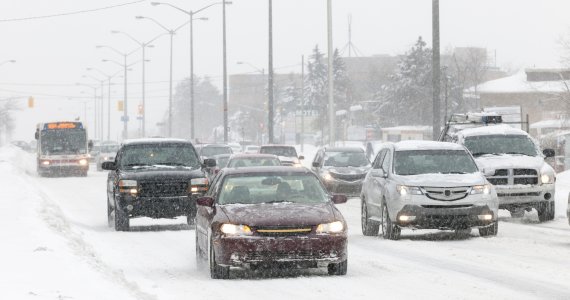Winter in the Hudson Valley brings picturesque landscapes but also creates hazardous conditions for pedestrians and drivers. Snow, ice, and freezing temperatures can increase the risk of slips, falls, and roadway incidents. This guide highlights essential safety practices for staying protected during winter weather, with a focus on the shared responsibility of road users and extra caution around school zones.
1. Driving Safely on Hudson Valley Roads
Winter driving conditions require additional preparation and attention. The National Highway Traffic Safety Administration (NHTSA) emphasizes that icy roads and reduced visibility contribute to numerous roadway incidents each year
- Prepare Your Vehicle: Ensure your car is winter-ready with proper tire pressure, functional windshield wipers, and a stocked emergency kit. Include items like an ice scraper, blankets, and a flashlight.
- Adjust Your Driving: Drive at reduced speeds and maintain a greater following distance to allow more time to react to sudden stops. Black ice is a common hazard in the Hudson Valley, especially on bridges and overpasses.
- Avoid Distracted Driving: Keep your focus on the road and avoid multitasking, as icy conditions demand quick reactions.
2. Pedestrian Safety in Winter Weather
Pedestrians face unique challenges in winter, from icy sidewalks to reduced visibility. The National Safety Council (NSC) advises extra caution when walking near roadways during inclement weather
- Wear Proper Footwear: Opt for boots with good traction to prevent slips.
- Use Designated Crosswalks: Always cross streets at marked crosswalks, and make eye contact with drivers to ensure they see you.
- Stay Visible: Wear bright or reflective clothing, especially during early mornings or evenings when daylight is limited.
3. Special Considerations for School Zones
Children are especially vulnerable in winter weather, particularly during pick-up and drop-off times at school. According to the National Safety Council, extra vigilance is required when children are boarding or exiting school buses
- Drivers: Reduce speed in school zones and stop at least 20 feet from a school bus displaying its stop sign. Watch for children who may dart into the street unexpectedly, especially in snowy conditions.
- Parents and Guardians: Ensure children are dressed warmly and teach them to wait for buses at safe distances from the curb.
- School Officials: Clear snow and ice from bus stops and drop-off areas to reduce slip-and-fall hazards.
4. Protecting Against Slips and Falls
For both pedestrians and property owners, preventing slips and falls is critical during winter.
- Clear Walkways: Property owners are responsible for removing snow and ice from sidewalks. Negligence in this duty could lead to liability in the event of an injury.
- Use Sand or Salt: Applying sand or salt to icy areas improves traction.
What to Do if an Incident Occurs
Even with precautions, injuries can happen. If you or a loved one is harmed due to another party’s negligence—whether as a pedestrian or driver—it is important to know your rights. Consulting with an experienced attorney can help you explore options for compensation and justice.
By following these safety tips, Hudson Valley residents can navigate winter weather more confidently. For additional resources, visit the National Highway Traffic Safety Administration, National Safety Council, or the Insurance Institute for Highway Safety.
Stay safe this winter!

